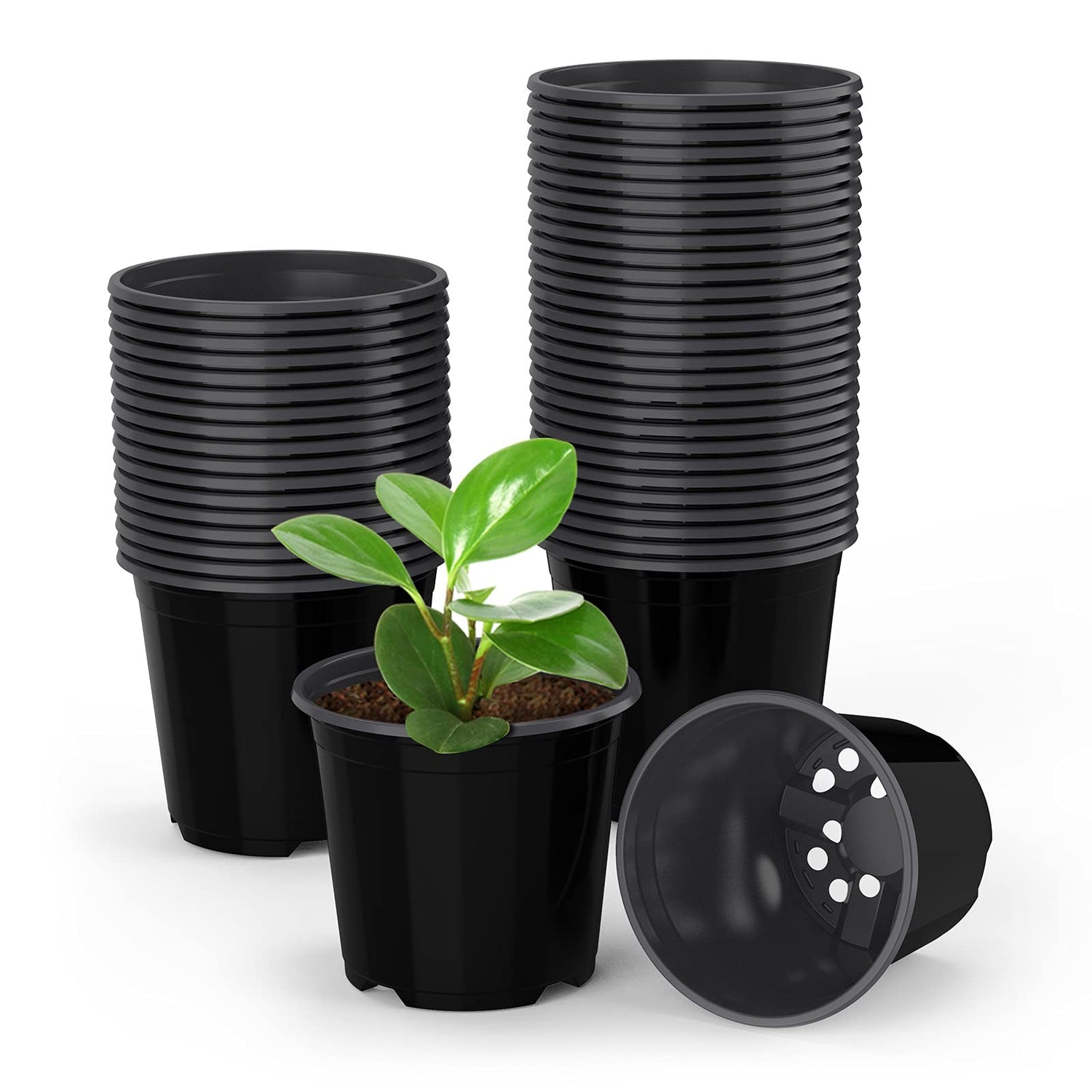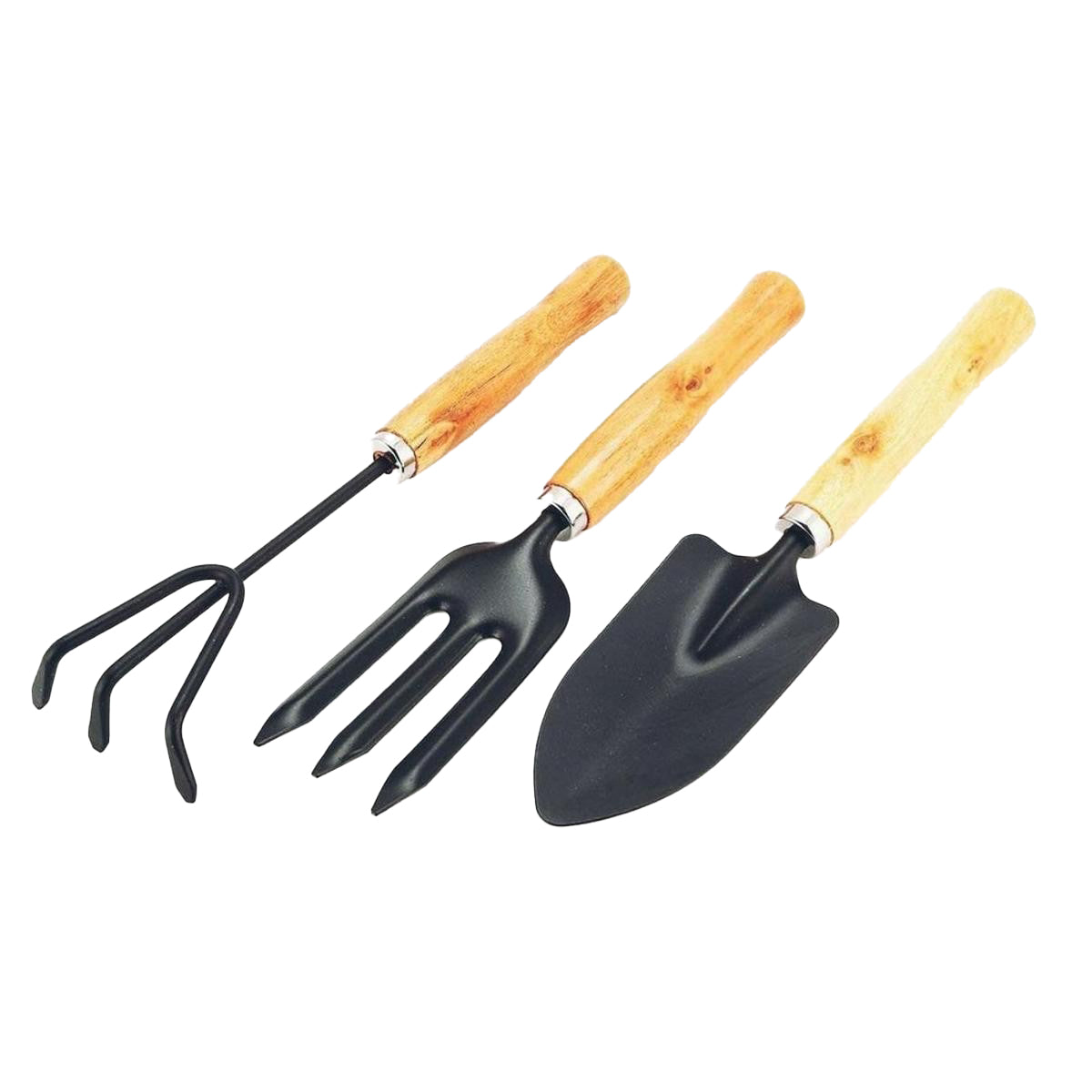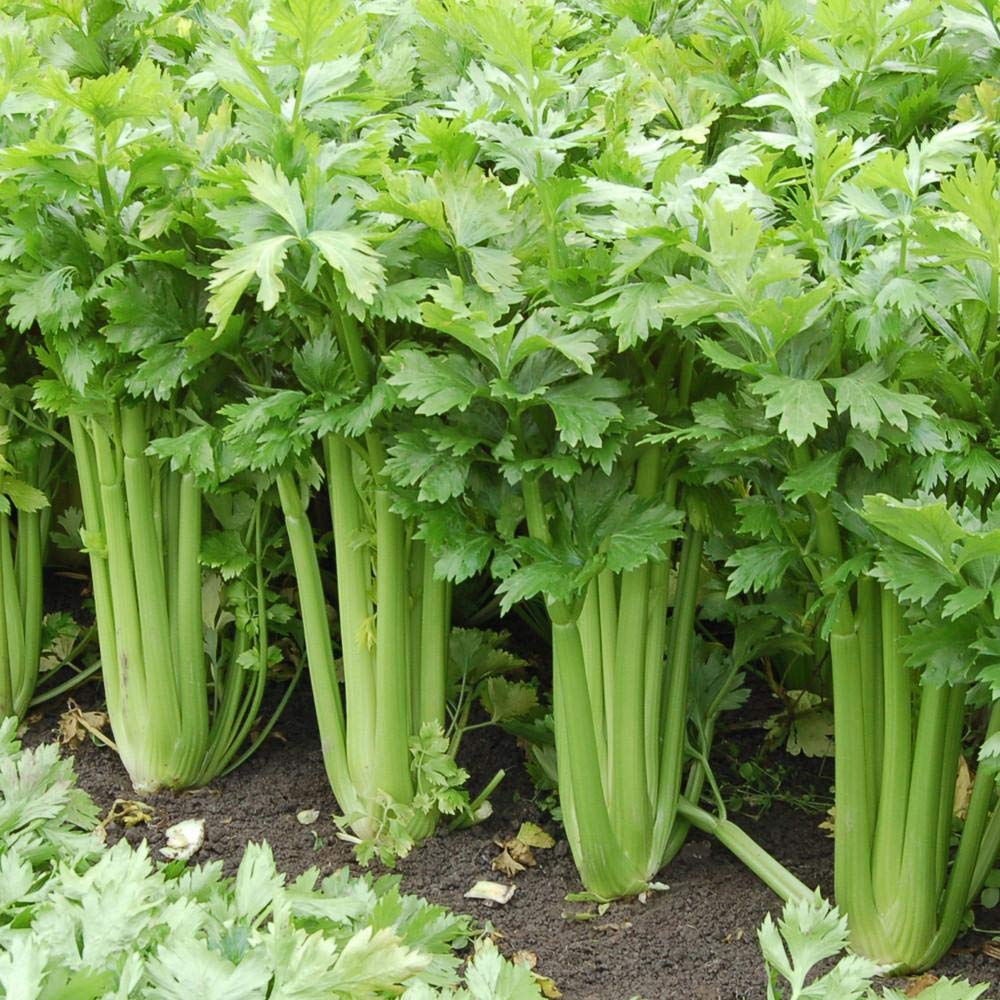
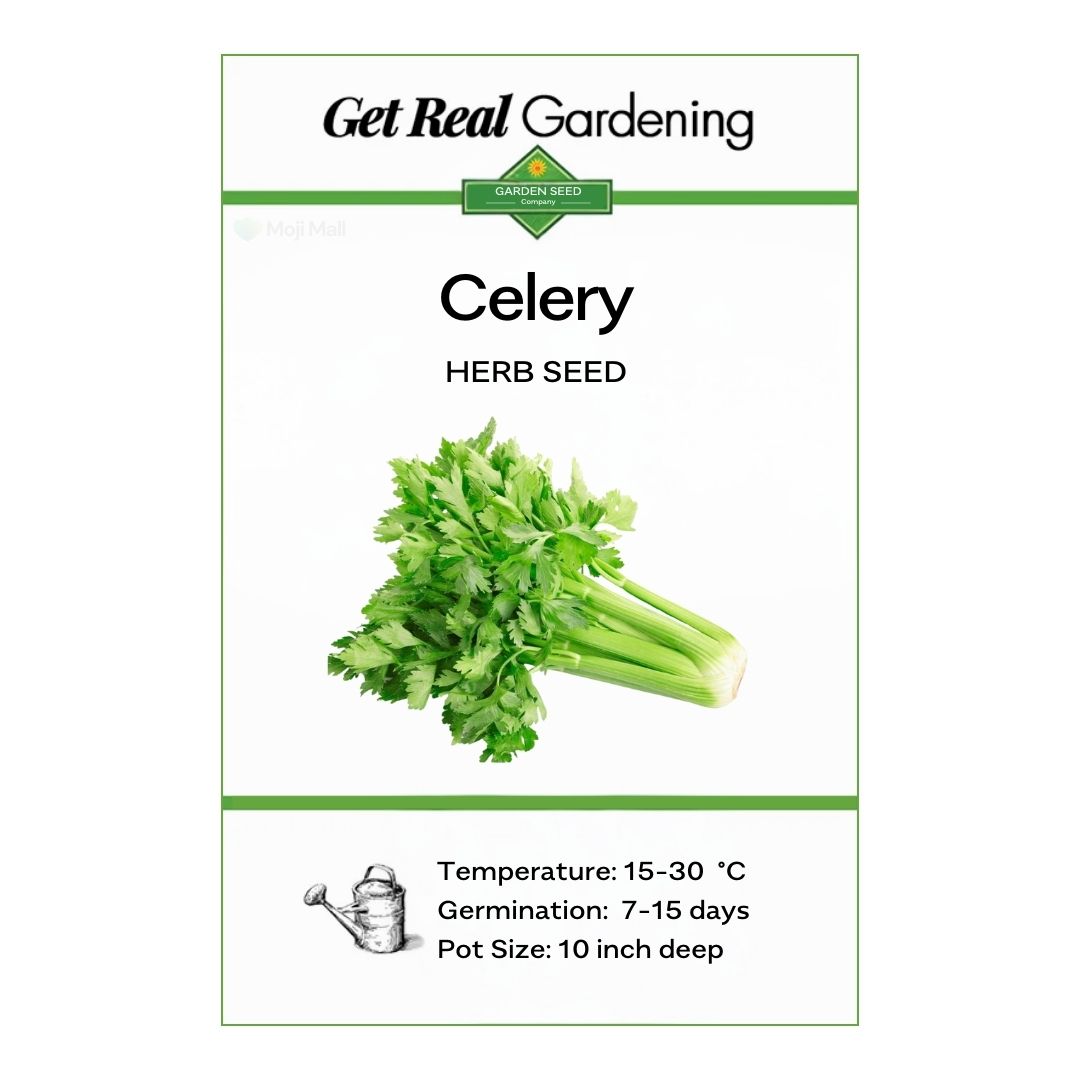
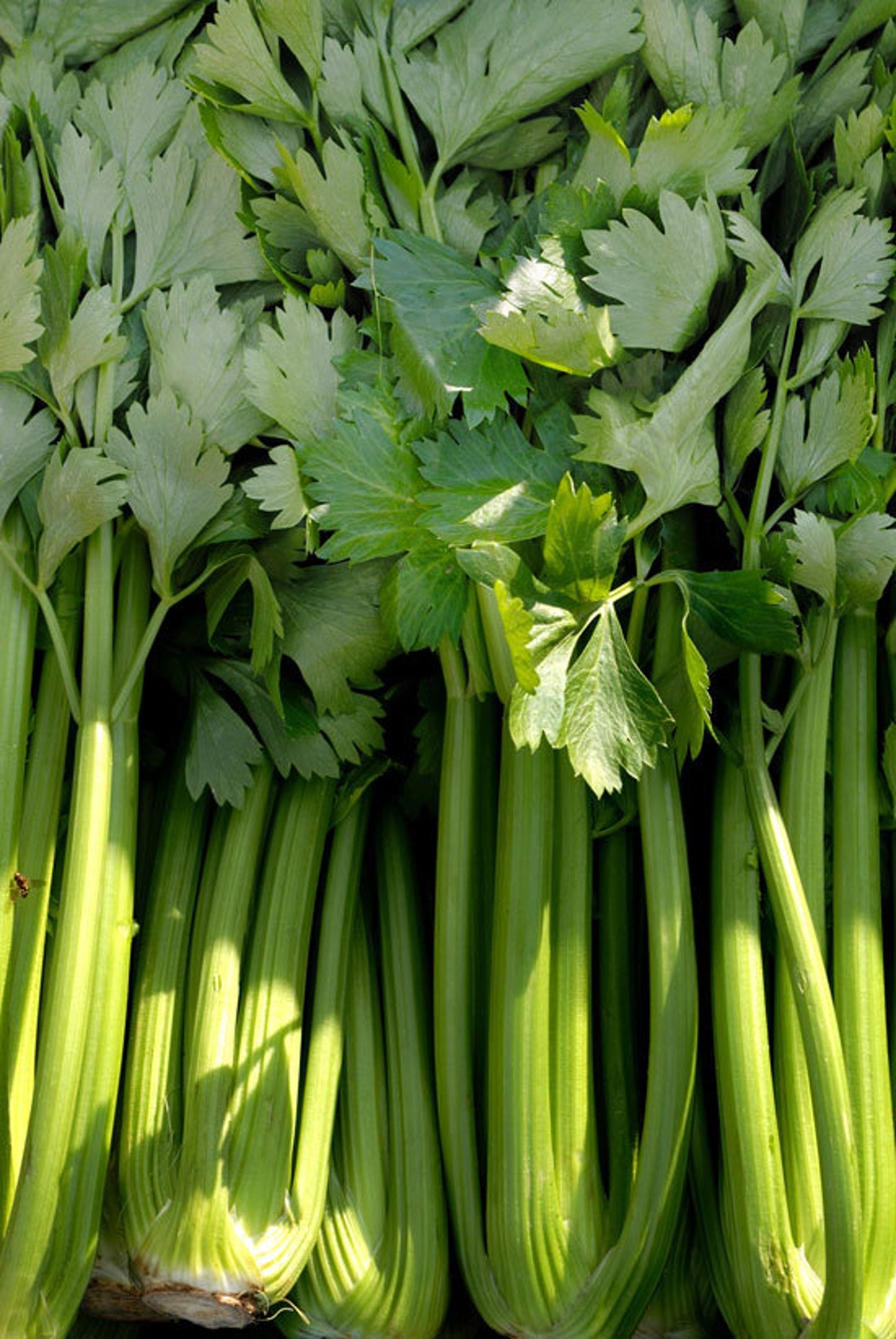

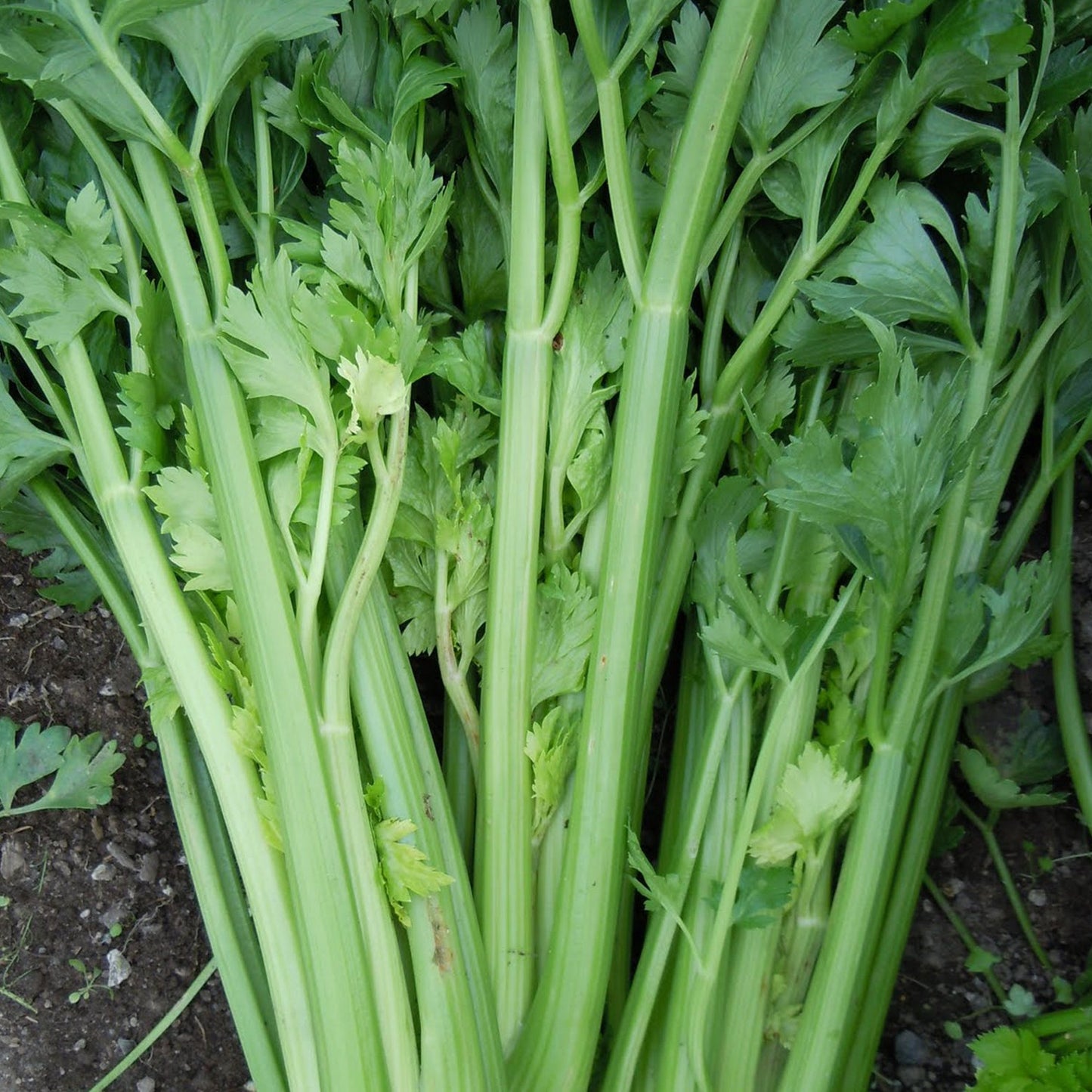
Thinking of growing celery from seed this winter? These seeds are well-suited for rooftop containers, kitchen pots, or small home gardens. While celery grows slowly, the reward is worth it — crisp, aromatic stalks that elevate soups, salads, and everyday meals with their fresh flavor.
Best sown from October to January, celery grows well in pots or beds with rich soil and regular moisture. Once established, it gives a long harvest window with deep flavor and excellent texture.
Why Gardeners Choose It
- Grows well in 10–12 inch pots or raised beds
- Strong, crisp stalks with classic celery taste
- Performs best in cool weather with filtered sunlight
- Good choice for rooftop or container growing
How to Grow Celery from Seed
When to Sow: October to January (cool season)
Where to Grow:
- 10–12 inch pots or trays with drainage
- Raised beds with soft, rich soil
Sowing Instructions:
- Mix 2 parts garden soil + 1 part vermicompost
- Sow seeds very shallow — just press into surface
- Mist daily to keep surface moist
- Germination is slow: 10–20 days
- Transplant to final spot when seedlings are 3–4 inches tall
Fertilizer & Care
- Before Sowing: Mix Vermicompost into soil
- Every 2 Weeks: Apply NPK 20-20-20
- Mid-Growth: Use Seaweed Liquid Fertilizer for stronger stalks
- Pest Control: Spray Neem Oil if leaf-eating pests appear
Tips from Local Gardeners
- Keep soil moist — celery hates drying out
- Don’t bury seeds deep; they need light to germinate
- Thin seedlings to avoid crowding
- Harvest when stalks are firm and 6–8 inches tall
FAQs
Should I soak celery seeds before planting?
You can soak them for a few hours to speed up slow germination, but it’s not required. Just sow them on the surface and mist regularly.
Can I grow celery in partial sun?
Yes — filtered or light morning sun works well. Full harsh sun can stress young plants.
What’s the biggest mistake beginners make?
Burying seeds too deep or letting soil dry out. Celery needs surface sowing and consistent moisture.








